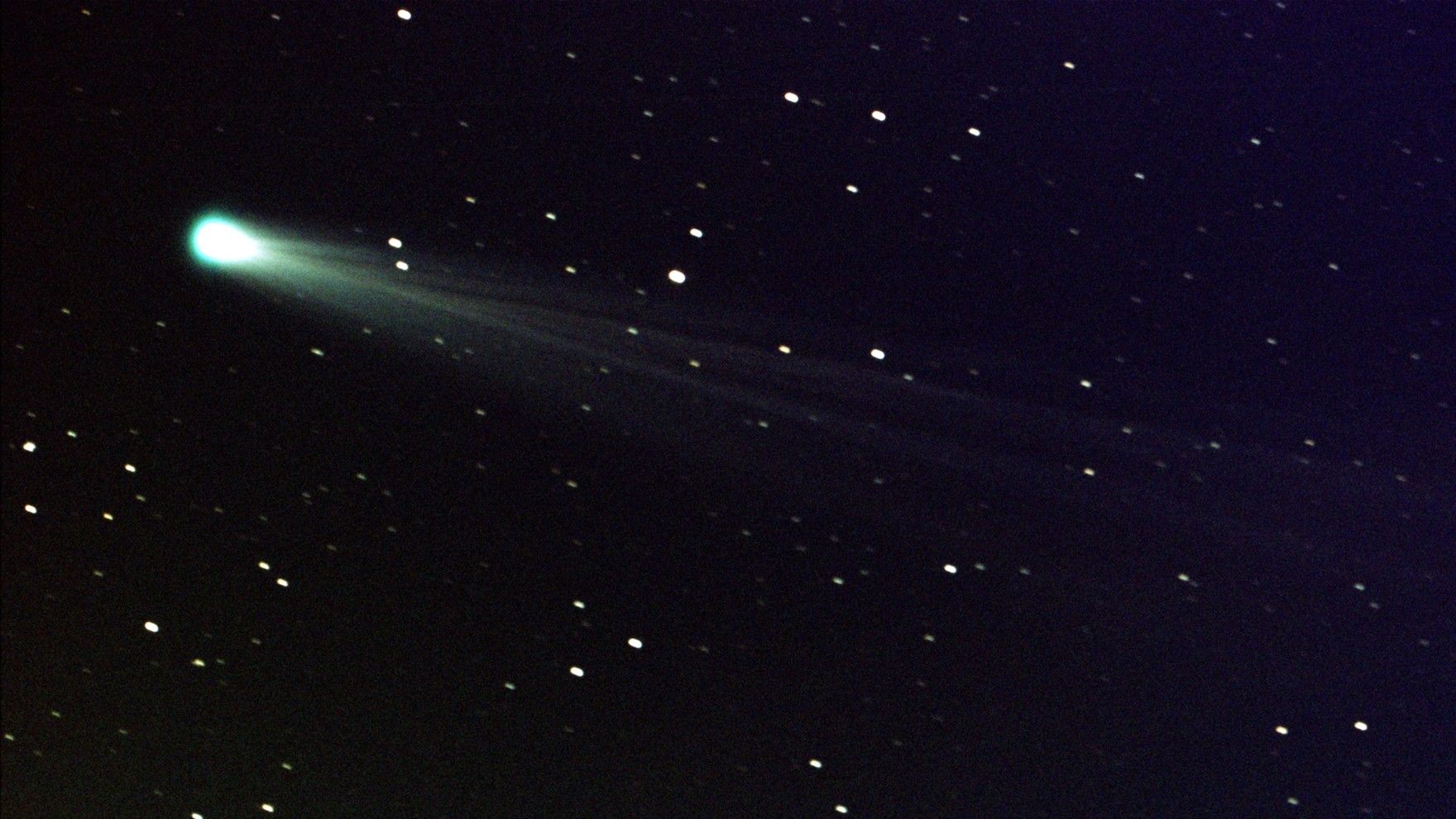Bright new comet discovered zooming toward the sun could outshine the stars next year
The newly discovered comet C/2023 A3 is making a close approach around the sun for the first time in 80,000 years, and might be as bright as a star in fall 2024.

A newly discovered comet may appear as bright as a star in the night sky by fall 2024.
The comet, known as C/2023 A3 (Tsuchinshan-ATLAS), was first noted by the Asteroid Terrestrial-impact Last Alert System (ATLAS) telescope project in South Africa on Feb. 22, according to the Minor Planet Center. Astronomers at the Purple Mountain Observatory in China also discovered the comet independently on Jan. 9, so both observatories are cited in the comet's full name. Skywatchers around the world have since observed it in new and old images, with the earliest detection found in images taken by a wide-field camera on a telescope at Palomar Observatory in California on Dec. 12, 2022.
Currently, C/2023 A3 is between Saturn and Jupiter, according to EarthSky. It's traveling at a zippy 180,610 mph (290,664 km/h) and is likely to make its closest approach to Earth on Oct. 13, 2024.
Related: Comets: Everything you need to know about the 'dirty snowballs' of space

Looking for a telescope to see comets? We recommend the Celestron Astro Fi 102 as the top pick in our best beginner's telescope guide.
Astronomers estimate that the comet orbits the sun only once every 80,660 years. This trip around, the comet will make its closest approach to the sun — known as perihelion — on Sept. 28, 2024, according to EarthSky.
All of this depends, of course, on the comet staying in one piece. Comets are loosely bound balls of ice, rock and dust, and they often break up when they approach the sun and start to heat up.
If the comet does hang together, it may become visible in amateur telescopes in June 2024, according to EarthSky, before passing between Earth and the sun on its way to perihelion. At perihelion, the comet will be low on the eastern horizon and may not be visible to many viewers on Earth; as it swings past Earth on its outbound journey into the solar system, it will appear higher in the sky. Skywatchers will likely get their best views in late October, as the comet moves through Serpens Caput (the western part of the constellation Serpens) and into the constellation Ophiuchus in the evening sky.
Get the Space.com Newsletter
Breaking space news, the latest updates on rocket launches, skywatching events and more!
As viewed from Earth, the comet may be as luminous as the brightest stars in the sky during its upcoming flyby, according to EarthSky. This is brighter than the green comet C/2022 E3 that just passed by Earth in January. That comet had a brightness of around magnitude +4.6, just visible to the naked eye. The new comet may have a brightness of magnitude 0.7, potentially peaking at magnitude -5, similar to Venus at its brightest. (Lower numbers mean greater brightness on the stellar magnitude scale.)
Much is yet unknown about C/2023 A3, including its size. Without more data, astronomers are still debating the comet's chances of survival. In a message chain for astronomers, University of Pennsylvania postdoctoral researcher Qicheng Zhang summed up the situation, calling C/2023 A3 the most promising comet in years to provide naked-eye views but cautioning that these hopes could be dashed. "C/2023 A3's survival, while promising, is not guaranteed at this point," Zhang wrote.
Originally published on LiveScience.
Follow us @Spacedotcom, or on Facebook and Instagram.
Join our Space Forums to keep talking space on the latest missions, night sky and more! And if you have a news tip, correction or comment, let us know at: community@space.com.

Stephanie Pappas is a contributing writer for Space.com sister site Live Science, covering topics ranging from geoscience to archaeology to the human brain and behavior. She was previously a senior writer for Live Science but is now a freelancer based in Denver, Colorado, and regularly contributes to Scientific American and The Monitor, the monthly magazine of the American Psychological Association. Stephanie received a bachelor's degree in psychology from the University of South Carolina and a graduate certificate in science communication from the University of California, Santa Cruz.
-
George² How little we know about this comet, even though we now have more than 10 telescopes with a diameter of 8 meters and more and supercomputers to calculate physical and orbital parameters. I'm not "ok" with that. It is necessary to demand more, against the salaries that the astronomers receive and the other expenses of the activity.Reply -
rod Orbital elements published so far,Reply
Orbital elements:
C/2023 A3 (Tsuchinshan-ATLAS)
Epoch 2023 Feb. 25.0 TT = JDT 2460000.5
T 2024 Sept. 28.55963 TT Rudenko
q 0.3904059 (2000.0) P Q
z +0.0006401 Peri. 308.59081 +0.36275685 +0.90020587
+/-0.0030246 Node 21.58224 +0.91805884 -0.30086181
e 0.9997501 Incl. 139.08539 -0.15992321 +0.31481988
From 155 observations 2022 Dec. 22-2023 Feb. 28, mean residual 0".3.
https://minorplanetcenter.net/mpec/K23/K23D77.html
The most recent green comet the Neanderthals some claimed were able to see 50,000 years ago, turned out to be a disappointing comet show for many in light polluted areas.










